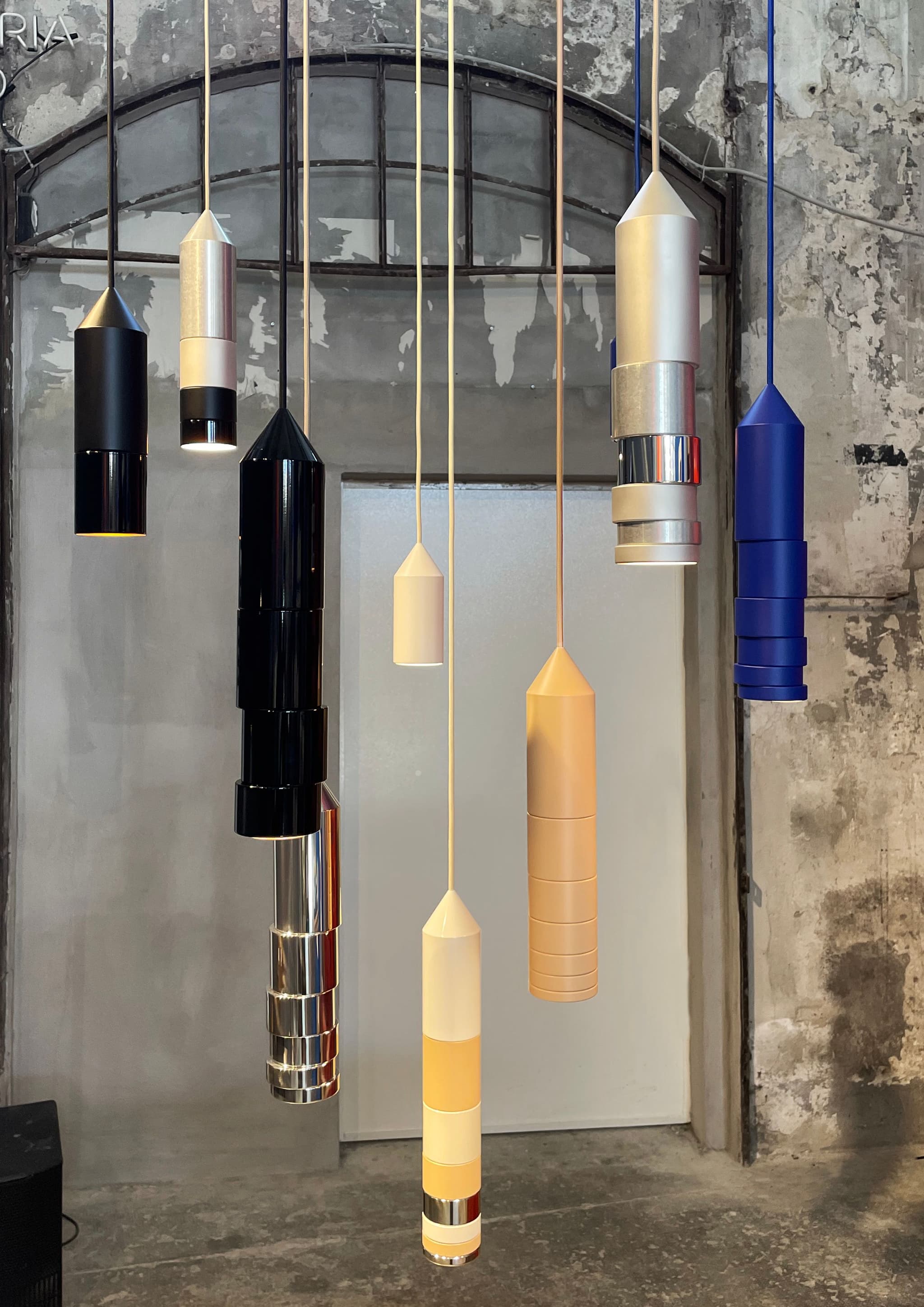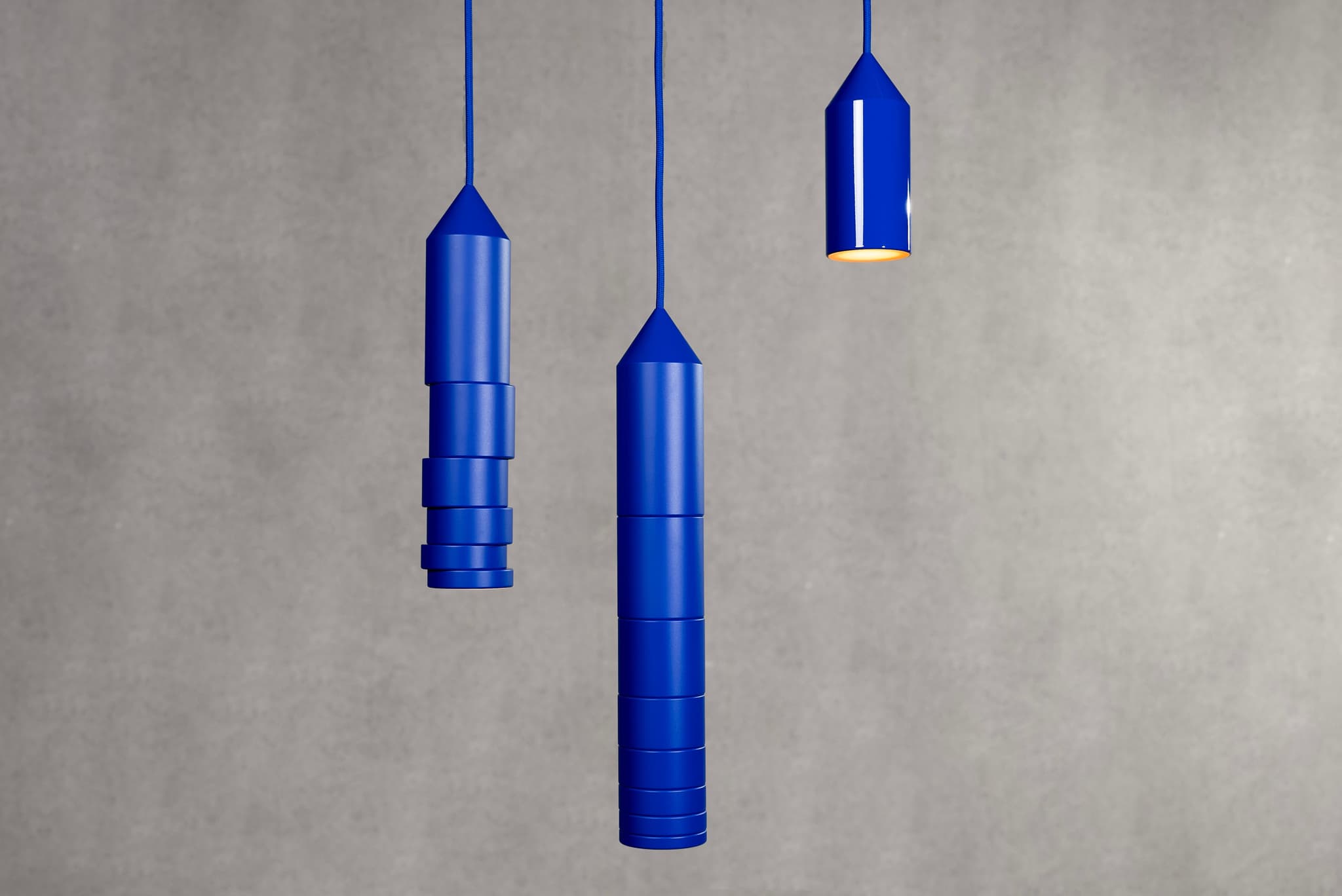Growing up with two cultures, how has your multicultural background influenced your design philosophy and approach to creating functional and emotional solutions?
Being raised in two different cultures means that one must constantly weigh and manage at least two different points of view in life and reality. I had built up flexibility and an open mind from a very young age. This means not taking the world around me and myself at face value and therefore constantly assessing them to take advantage of every opportunity. I've been able to always try new approaches and think "out of the box" in my job because of this necessity.
Being German and Lebanese influences who I am as a person, and I am proud of both heritages. To be at peace with myself, I always work to bring the greatest aspects of both cultures together. My design reflects this blending. Lebanese design is distinguished by its detailed craftsmanship, modernity blended with tradition, and diversity of culture. German design is, on the other hand, characterised by simplicity, functionality, and technological perfection.
I think this combination perfectly captures who I am as a designer and artist. For instance, in my piece "Butterfly", I blended the color and intricate details of Lebanese design with the accuracy and minimalism of German design. Another piece I created, "Dans," displays the clean lines and structural integrity of German design as well as embodying the dynamic movement and cultural fusion profoundly ingrained in Lebanese history. These pieces demonstrate my ability to develop practical and sensitive solutions that celebrate my multicultural identity.

The Butterfly series uses marble slabs from the 1950s and 1960s. Can you describe the process of sourcing these materials and why you chose them for this series?
My ideal career as a designer has always been to work with marble. I found this material fascinating, since it so masterfully captures the amazing characteristics of the world around us. Marble shows its inherent beauty as a piece of natural art. The unique texture and the natural arrangement of each component make it an artistic and singular masterpiece. As "nature's given art" it illustrates how nature helps shape our creative process as a co-creator. Every single part is unique.
My collaboration with multiple stonemasons allows me to get marble slabs from the 1950s and 1960s, as they frequently have ancient marble slabs. In addition, I search the internet for relevant resources. Although this is a labor-intensive procedure, meeting new people and learning about and sharing their stories is always enjoyable. I have already gathered several lovely materials in this method.
Because it recycles already existing resources and lowers the need for freshly mined marble, this strategy is also sustainable. Every part deserves a fresh start! Significant environmental harm results from marble quarrying, including pollution and damage to the landscape, health problems from dust and chemicals, socioeconomic difficulties for the workers and local communities, and long-term economic and infrastructural burdens that restrict sustainable development.

How do you ensure that the new forms you create for the Butterfly series maintain the integrity and historical essence of the original marble slabs?
I wanted to experiment with different techniques and depart from my typical workflow as an industrial designer when creating the “Butterfly” series. It was important to me to start the entire design process with the material and put it front and center.
To develop a table collection that honors the existing material—marble from the 1950s and 1960s — I thought about how I could use it in a way that would be both minimally invasive and more transformative.
It was essential to modify the material as little as possible to maintain the marble slabs' integrity and historical significance. The series' design language leaves the marble alone and excludes any additional materials. In this manner, the marble's inherent beauty and significance are maintained. The traditional slab form is kept, but it's made to look light and elegant.
My goal was to find a new design that was innovative and offers new opportunities for thought. This method shows the marble in a contemporary setting while maintaining its historical significance. By taking pride in the material and its history, it creates an analogy between the past, present, and future.

The Dans lighting series is made from recycled aluminium. What challenges did you face in working with post-consumer scrap aluminum, and how did you overcome them?
Finding a business that specialises in recovering pure recycled aluminium from post-consumer scrap was the largest challenge. In a sustainable circular economy, aluminium must be pure to be used effectively.
It's important to balance efficiency, sustainability, and aesthetics while designing things. The material should have the least possible effect on functionality, durability, and design. It was essential for me to showcase aluminium's raw, natural beauty as a result.
The automotive industry, which appreciates aluminium for its strength and lightweight, is one example of a sector that uses pure recycled aluminium. Because of its endurance and resistance to corrosion, it is also being utilised more and more in the building sector. The "Cradle to Cradle" concept encourages a sustainable circular economy and highlights the endless recyclability of materials like aluminum. When compared to the production of primary aluminium, recycled aluminium can save up to 95% of the energy and substantially lower greenhouse gas emissions.
Recycled aluminium can be integrated into design processes to produce beautiful, useful, and sustainable products. So, without reducing quality, sustainability and design go hand in hand.

How does the adaptable and dynamic design of the Dans series reflect your understanding of light as a creative element in shaping atmosphere and space?
My perception of light as a creative element that can be used to shape atmosphere and space in a variety of ways is reflected in the Dans series' versatile and dynamic design. Light has the special power to affect feelings and change how a space is seen.
A multitude of visual effects and moods may be produced by arranging different light modules in different combinations thanks to the Dans series' dynamic design. Because of this architectural versatility, places may be made colorful and personalised, highlighting the transformational power of light.
In the same way that the pure quality of nature always shows a hint of carelessly formed forms that work well together to make something strong and lovely, I wanted to challenge the rational design concept of perfection and look for the ideal imperfection in asymmetry.
As a designer, I was challenged by this method. It proves that light is an essential component in establishing mood and feelings in addition to being a practical aspect. Light can be employed in a variety of ways to change places and establish different moods thanks to the “Dans” series' dynamic and adaptable design.

Sustainability is a key aspect of your work. What are your thoughts on repurposing existing materials and rethinking traditional processing methods?
One of my main concerns at work is sustainability. To build a more sustainable future, it is imperative to reuse current resources and reconsider conventional processing techniques. We conserve resources and save a substantial amount of energy by recycling commodities like aluminium. Reducing our ecological imprint and protecting the environment are greatly aided by these savings.
I place special importance on innovative production techniques that lower waste and pollution. From the outset of the design process, it is important to incorporate sustainability. Products should be made with easy-to-recycle and disassembled components in mind to improve sustainability and increase material life.
Another important factor in encouraging sustainable practices is collaboration between many professions and industries. We can work together to create innovative, environmentally friendly materials and processes by sharing our resources and expertise. Furthermore, it is a personal goal of mine to educate consumers about the advantages of sustainable products. Growing consumer demand for sustainable goods may push businesses to use greener processes and materials.

What upcoming projects are you most excited about, and how do they build on your previous work in terms of sustainability and design innovation?
I am excited to experiment with flowing fabrics and forms more in the future, but I can't give too much away just now. My passion, light, will once again be the main topic; the “Dans” series was only the start.
Once again, material recycling will be a priority. I also want to continue experimenting with different materials and making more use of 3D printing technology. These projects will be fascinating in terms of design innovation as well as sustainability.
An additional primary focus will be investigating novel techniques for handicrafts. My goal is to create new ways of expressing myself and bringing together the greatest aspects of both modern and classic technologies. I'm excited to see the outcomes, and it will be a fascinating adventure.








